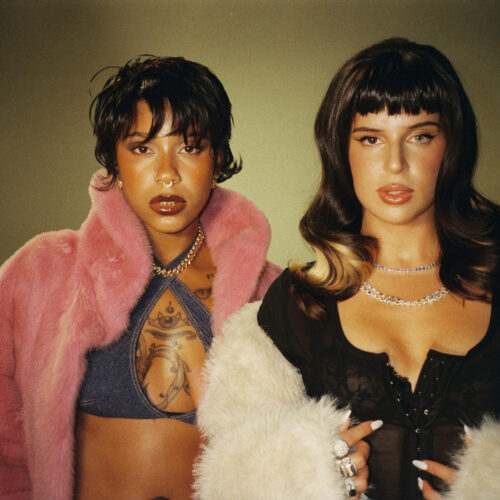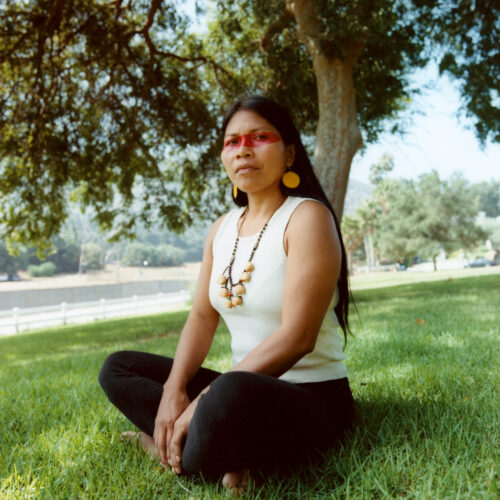Millions of Afro-Brazilians walk the streets of São Paulo and Rio De Janeiro every day. Vestiges of the African diaspora and its tangible trans-cultural influence pour out into the culture of Brazil through the country’s cuisine, history, and music. Kizomba, the far-reaching genre that blends African rhythms with Caribbean and European influences, is no different. Deriving from central Africa and traveling to other countries through Portuguese music, Kizomba is a dance style that originated in Angola, and is becoming more historically recognized in Brazil by artists.
Kimbundu is a major Bantu language of Angola; in that language the word “Kizomba” translates to “party.” The Ambundu in Southern Africa, where Angola lies, are accustomed to the intimate hip-swaying sounds of semba. The global genre of semba derives from Africa, and Kizomba is a subgenre that is very prominent in places with native Portuguese speakers.
Similar to semba, Kizomba is a dance executed best in pairs. You follow the electronic and alluring rhythms of Kizomba by sashaying together with hands grasped and bodies intertwined.
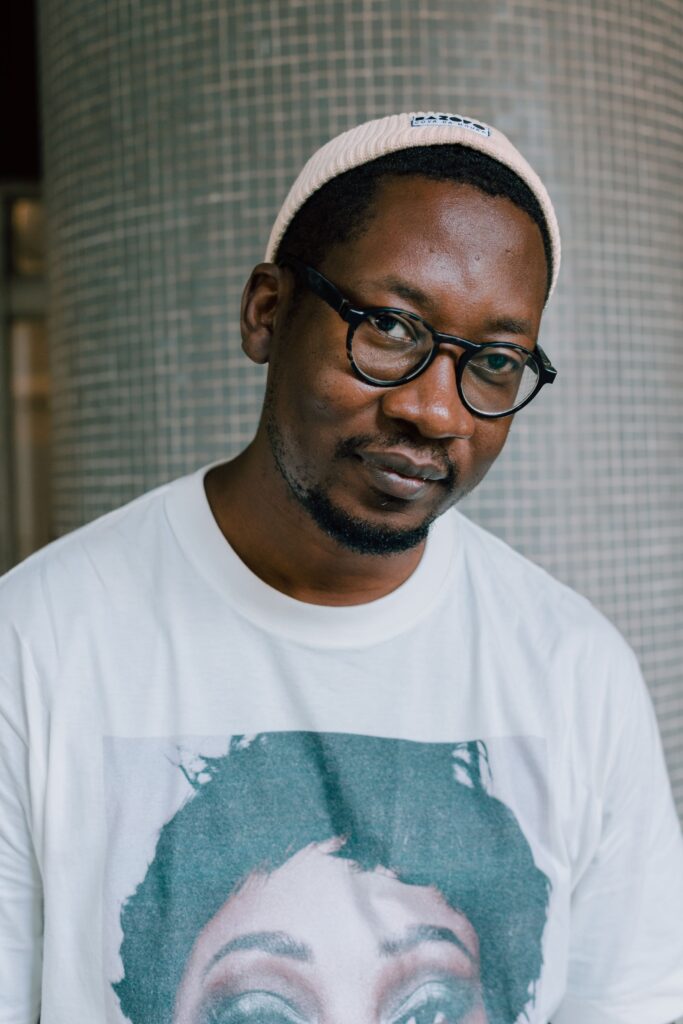
Founder Kalaf Epalanga. Images by Davi Reis and Helen Salomão, courtesy Kizomba Design Museum.
“In a world cloaked in dissonance, a melody arises — Kizomba, a rhythm cradled in the arms of those who dance under the dim lights of a club, in a city untouched by the usual paths of tourists,” said Angolan artist and Berlin-based writer Kalaf Epalanga, the founder of the Kizomba Design Museum. Epalanga aims to preserve the heritage of Kizomba and wants the world to be aware of the intimate form of dance, beyond the smooth footwork. “May the world, with eyes wide open, recognize the artistry woven into each note. May Kizomba not be merely a genre relegated to the fringes of the musical spectrum but a movement, a revolution, a binding force in our collective human experience.”

Images by Davi Reis and Helen Salomão, courtesy Kizomba Design Museum.
On September 6, the Kizomba Design Museum in São Paulo celebrated the art form, and how it has historically rooted itself in Brazil and Angola. Kizomba has taken on many different forms, emulating national anthems that range from passionate rhythm & blues to Afro-merengue-style dance.
The museum’s three-day immersive exhibition traced the cultural movement of Kizomba at the most-visited international art event in the southern hemisphere, Brazil’s 35th Art Biennale. This large-scale contemporary art event brings together all mediums of art, similar to Miami’s Art Basel. “In São Paulo, we want above all to celebrate Kizomba. We need people to trust that we are not manipulating them when we say being exposed to Kizomba’s attitude and lifestyle might just be better than the next self-help book on your list,” Angolan fine artist and founding member of the Kizomba Design Museum, Nástio Mosquito teases. “I will really be proud of us when people embrace Kizomba as a culture, celebrated with literature, critical creative thinking, and yes, music, dance, and food!”
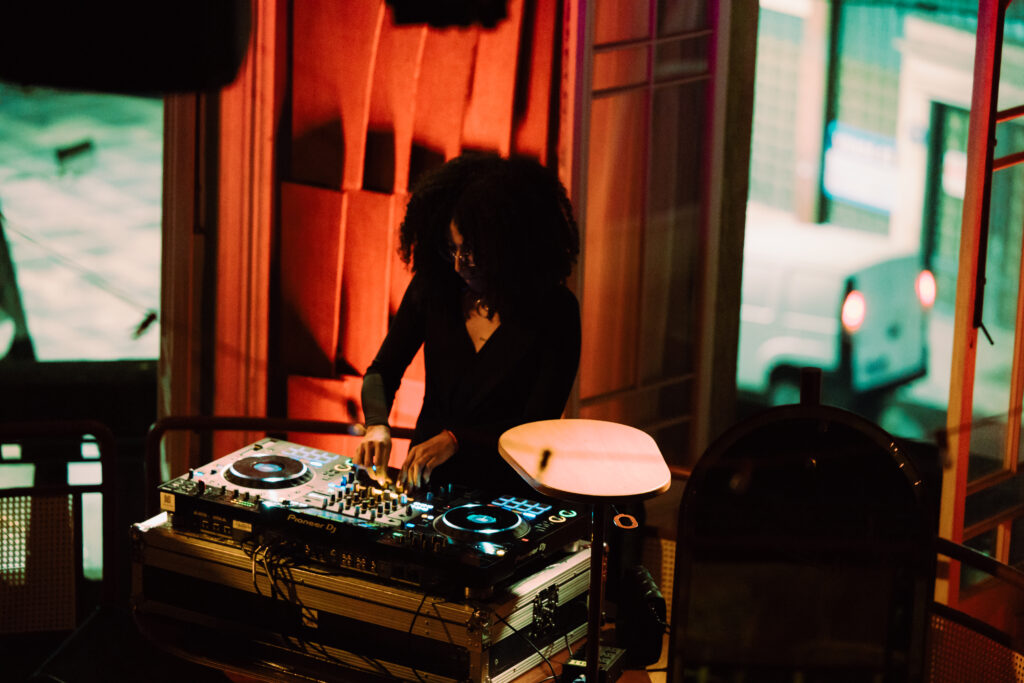
Images by Davi Reis and Helen Salomão, courtesy Kizomba Design Museum.
With over 120 artists participating, there were musical performances, Kizomba dance workshops taught by Coletivo Kizomba Yetu, live art installations, and spoken-word poetry showcases over the course of the exhibition. Kizomba artists Paulo Flores, Djodje, Branko, Indi Mateta, Batida and more took the stage.
As museum co-founder, Mosquito insinuates Kizomba is a “lifestyle” just as much as it is a dance — it is a way of life that has carried through generation to generation. “It is a fusion of African and Caribbean rhythms that resonated with other cultures, leading to its popularity in dance communities and nightclubs,” popular DJ João Reis tells LATINA. “The sensual and intimate nature of Kizomba attracted dancers, and its influence gradually spread across the world. Over time, Kizomba became an integral part of the European and African dance scenes, contributing to its rich cultural tapestry.”
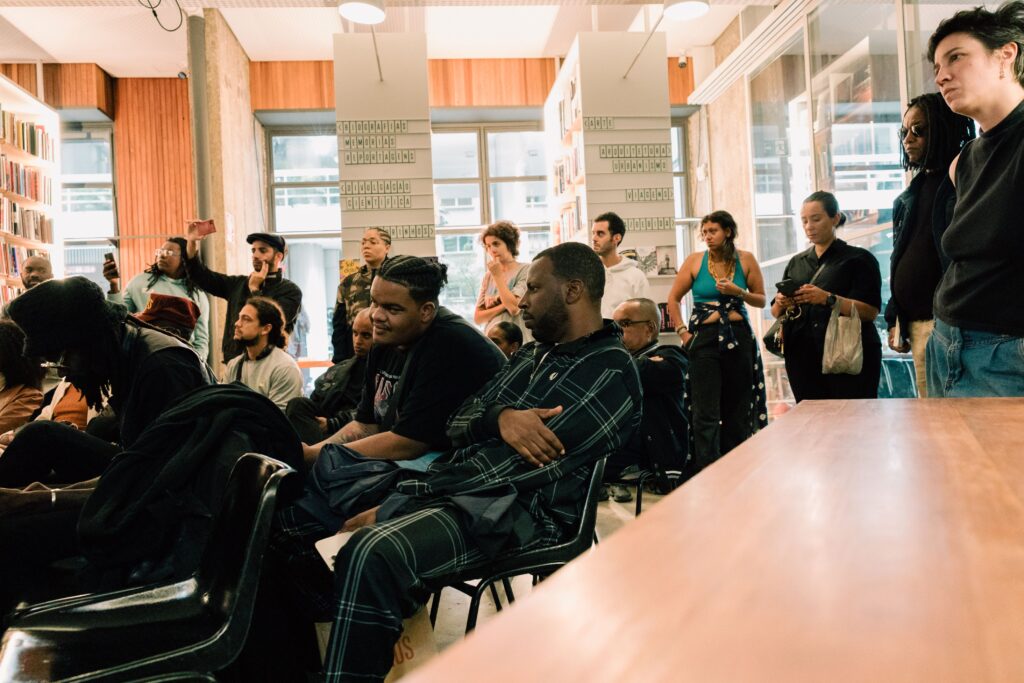
Images by Davi Reis and Helen Salomão, courtesy Kizomba Design Museum.
The Kizomba Design Museum hosted activations and art exhibitions at public spaces across São Paolo, such as at Casa de Francisca, Pivô Gallery, and the Megafauna bookstore. Colombian-Ecuadorian poet Yuliana Ortiz Ruano traveled to Art Biennale to add her perspective as a transcultural artist who sources inspiration from her African ancestry. “I hope to listen to everything that the exponents of Kizomba can show me in São Paulo, and I want to be able to contribute a little from my diasporic perspective of the Colombian-Ecuadorian Black Pacific,” Ruano told LATINA ahead of the exhibition.
In Ecuador, Ruano, whose work has been translated across multiple languages, analyzes the importance of music according to the African diaspora. “I know now that I am a teacher and cultural mediator,” Ruano says. “However, music has always been that bridge to those erased roots; as the Barbadian philosopher and poet Kamau Brathwaite said, ‘the nation language of the diasporas, the languages and creations that resisted colonization, are not in the academy but in popular music.’”

Images by Davi Reis and Helen Salomão, courtesy Kizomba Design Museum.
Art programmers and founders, Kalaf Epalanga and Nástio Mosquito are trailblazers looking to expand the art scene in São Paulo by bringing forward work from across the African diaspora. Kizomba is integral to Semba and has been an early form of Afro-Latin music that spans across the romantic language of Portuguese. “As the geopolitical landscape undergoes yet another transformation, may this art form reshape our perceptions, connections, and essence,” Epalanga speaks to the philosophy and personal initiative that started the Kizomba Design Museum. “May Kizomba be a mirror reflecting our shared struggles and triumphs, a lens through which we see the world and each other a little clearer, a little kinder. And in that newfound clarity, may we dance together towards a future where art, in all its forms, is the bridge that spans the chasms that divide us.”
Malik Peay is a music, travel, film, and fashion journalist. @MalikPeay

